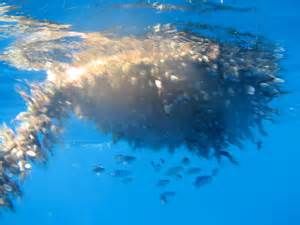Our oceans are in danger from garbage

The oceans cover up 71% of Earth’s surface, making up the largest ecosystems on Earth. The oceans are the most diverse bodies that accommodate a large array of organisms, ranging from small plankton to ginormous blue whales. However, these organisms are currently living under rough and perilous conditions due to the increasing amount of man-made garbage littering the oceans.
Each year, approximately 1.15 to 2.41 million tonnes of garbage are entering the oceans, causing a detrimental disturbance to the ocean’s ecosystem.
The accumulation of plastics in the ocean form a gyre of marine debris in the north central Pacific Ocean known as the Great Pacific Garbage Patch. The patch consists of any trash, from bottles to aluminum cans to plastic bags.
These wastes come from people who purposefully and accidentally dump garbage in their local rivers and streams, and the garbage slowly makes its way up to the sea. The mass of the garbage patch is estimated to exceed 80,000 tonnes, which is about 1.8 trillion plastic pieces floating in the ocean.
The patch covers an estimated surface area of 1.6 million square kilometers. This is twice the size of Texas or three times the size of France.
With a large number of plastics floating in the ocean, the impact on the marine ecosystem is significant and catastrophic to all the marine organisms. The problem with plastics, as many people already know, is that they are not biodegradable. These plastics can remain in the ocean for more than hundreds of years. They will continue to harm the marine organisms as they travel into the bodies of these animals and kill them.
The garbage also releases toxic chemicals into the marine environment, which can lead to the deaths of many organisms. The presence of the garbage patch is rapidly undermining the marine food web and causing an imbalance in the ecosystem.
According to an article written by Heidi Blake, the garbage patch has caused the deaths of more than a million seabirds and 100,000 marine mammals every year by ingestion and entanglement. Cigarette lighters, syringes, toothbrushes, etc. have been found in the stomachs of dead seabirds and marine mammals. Since plastics do not disintegrate, when dead animals decompose, these plastics are released and another animal will accidentally eat them again.
The garbage patch also has an impact on human health and the economy. Plastics can take up to 200 hundred years to break down into smaller pieces. As plastics break down into polymers and toxic chemicals, these chemicals remain inside the victims’ bodies. These chemicals go up the food chain and eventually to humans. The environmental damage caused by the patch also costs 13 billion USD.
There are organizations, such as The Ocean Cleanup, currently helping to clean up the ocean. The cleanup efforts have worked and are estimated to clean up 50% of the garbage every 5 years. WIth the new technology, people can alleviate the situation if more funding are to put into the cleanup efforts.







